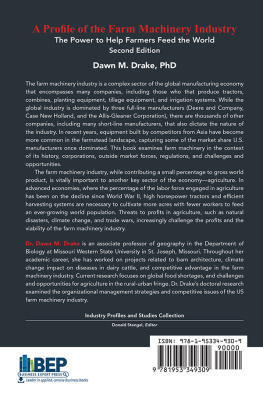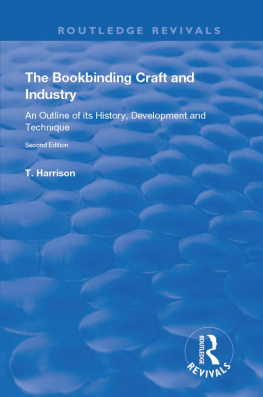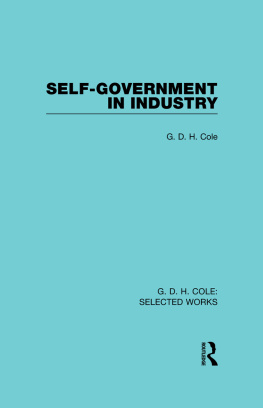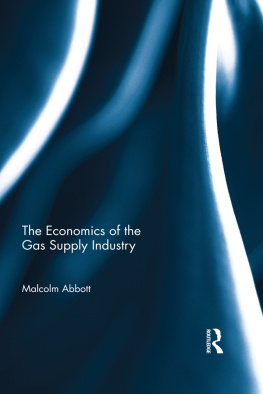A Profile of the Oil
and Gas Industry
A Profile of the Oil
and Gas Industry
Resources, Market Forces, Geopolitics, and Technology
Linda Herkenhoff

A Profile of the Oil and Gas Industry: Resources, Market Forces,
Geopolitics, and Technology
Copyright Business Expert Press, LLC 2014.
All rights reserved. No part of this publication may be reproduced, stored in a retrieval system, or transmitted in any form or by any meanselectronic, mechanical, photocopy, recording, or any other except for brief quotations, not to exceed 400 words, without the prior permission of the publisher.
First published in 2014 by
Business Expert Press, LLC
222 East 46th Street, New York, NY 10017
www.businessexpertpress.com
ISBN-13: 978-1-60649-500-1 (paperback)
ISBN-13: 978-1-60649-501-8 (e-book)
Business Expert Press Industry Profiles Collection
Cover and interior design by Exeter Premedia Services Private Ltd.
Chennai, India
First edition: 2014
10 9 8 7 6 5 4 3 2 1
Printed in the United States of America.
To my favorite geophysicist Frederic, who happens to also be my husband
Disclaimer
Although the author and publisher used their best efforts in preparing this book, the author and publisher make no representations or warranties with respect to the accuracy, currency reference or completeness of the book. They assume no responsibility for any inaccuracy, error or omission, or for any loss or damage arising in connection with or attributable to any action or decision taken as a result of using or relying on the information in this book
Abstract
We drilled in the right place- we were simply 30 million years too late. Richard Bray President of Sohio on drilling the Mukluk Prospect, Beaufort Sea, 1983.
As early as 3000 BC, we know that the people of Mesopotamia were using crude oil as a tar for building ships and houses so, it is not by any means a new industry, but it is a volatile one. Oil and gas are important to every aspect of our economy yet this industry is distinguished by its combination of increasing demands and decreasing discovery volumesand it is an industry shrouded in an environment of extremely volatile pricing. Although the profits enjoyed by the oil and gas industry are enormous, the industry remains one of the most capital intensive in a world where rising expenses continue to threaten to squeeze profit margins.
The Organization of Petroleum Exporting Countries (OPEC) was created in 1960 to mitigate pricing fluctuations. But this is an industry where radical action by either producers or consumers can have unpredictable consequences. This was illustrated in 1973 when the first oil crisis was triggered by political developments with the Egypt-Israel War. There followed a second oil crisis, sparked by the Iran revolution and the Iran-Iraq War. Geopolitics may continue to be the most important variable in maintaining existing assets and in successfully achieving new discoveries and carrying out their subsequent development.
But finding new oil and gas reserves is becoming more challenging, and the places where hydrocarbons are being found are more remote. Thus technology advances are also a key variable to enable exploration, drilling and development to become economically feasible in some of these more difficult operating environments.
The structure of the industry seems simple on the surface but is woven with complex relationships that are ever changing. There are only three categories of major players: international owned oil companies (IOCs), national oil companies (NOCs) that operate as corporate entities and national oil companies that operate as government agencies. Although the IOCs are among the top producers, it is important to note that 14 of the top 20 oil and gas producers are NOCs.
During the last century, oil and gas additions have exceeded demand but has this industry now reached a peak oil situation? Some experts argue that we are on the cusp of maximum oil production, whereas others suggest that we are still about a decade away. Others might provide arguments that identify peak oil as a moving target driven by economics and technology. Natural gas demand, however, is rising at a slightly faster rate than oil. Natural gas may be the immediate replacement fuel for oil as a source of clean and efficient electric power generation. Three out of the top ten Fortune 500 companies were oil/gas companies in 2011.
This short introduction to the oil and gas industry will focus on history, operations, major companies, outside market forces, regulation and the current challenges the industry faces. Such factors as finite natural resources, the environment, economics, geopolitics, and technology will all come into play in the narrative. The focus on oil and gas is likely to continue to grow until efficient, environmentally safe alternate fuels become available. The oil and gas industry will continue to have an enormous impact on life on our planet.
Keywords
oil, gas, energy, resources, petroleum, hydrocarbons, shale sands, reserves, seismic, fossil fuels
Contents
Special thanks to Dr. Richard (Rich) Cardwell for spending many hours reviewing the book and providing valued input on every aspect of every topic. Dr. Robert (Bob) Kieckhefer also reviewed the book in its entirety and provided his usual impressive insights. Their impressive breadth of knowledge, both scientific and operational, was very appreciated in their comments and feedback.
I also want to acknowledge my son, Brett Herkenhoff, for keeping me on the right track with . His expert knowledge in oil pricing, financial markets, and valuation was extremely important in ensuring accuracy of the content in this chapter.
The editorial hard work with formatting and indexing was provided by Sean Petersen. He was key player in the completion of this book.
Thanks to my husband Frederic, who constantly shares new articles on fossil fuels. He kept me current.
None of this would have happened if David Parker had not suggested the idea of this book to me. Also special thanks to David and his team for ongoing patience with my moving deadlines.
There may be no other industry in the world that requires a more diverse set of competencies and skills: human, political, technical, mechanical, and financial. This is an industry that is intimately entangled with national strategies and global power. This chapter will provide an over-view of the evolution of hydrocarbon demands and the industry that has subsequently developed to cope with those demands.
1.1 Early History
This is an industry with a long and complex history, starting as far back as 4000 BC people used oil obtained from ground seeps to waterproof boats and to act as an adhesive in the construction of buildings. We know that crude oil was refined in minor quantities for lamp and heating oil in China around 1000 BC and in 600 AD, the Byzantines used crude oil to produce flame weapons. In North America, Seneca Indians used oil as a medicine for skin ailments.
From the 16th century through the 19th century, whales provided the primary source of oil. Whale oil was used principally as lamp fuel and in the production of soap. But as the scarcity of whales became a reality, the modern hydrocarbon energy was born. Samuel Kier is credited with being the first person in the United States to refine crude oil into lamp oil or kerosene, as a replacement for whale oil around 1861. Pennsylvania Rock Company, later called Seneca Oil, completed their first successful drilling for oil in 1855 at Oil Creek, Pennsylvania in the United States. International drilling operations were also becoming active in areas such as Bbrka, Poland in 1854; Wietze, Germany in 1857; and Oil Springs, Ontario, Canada in 1858. This was the era when crude oil became affectionately known as black gold for obvious reasons.
Next page









